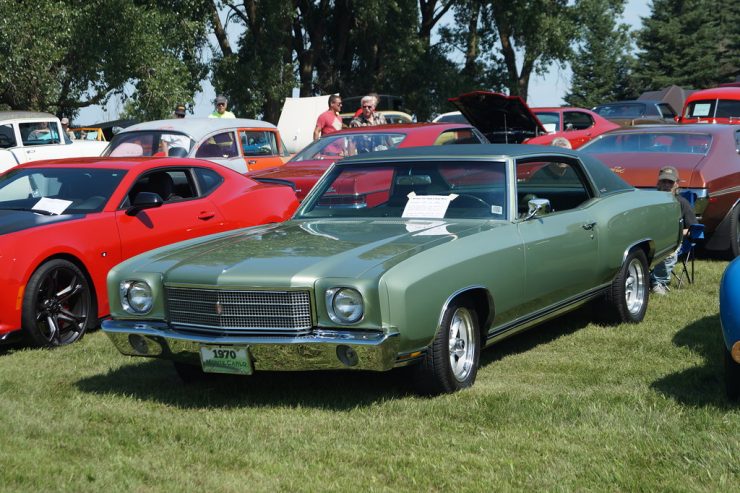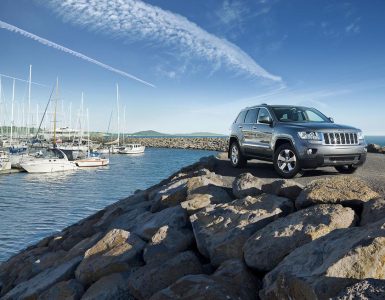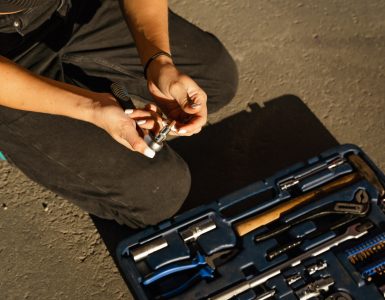This car had its beginnings in the 1970s. And it has been an iconic ride since that time.
The Chevrolet Monte Carlo is stereotyped as a “middle class” luxury car. It’s like a personal-luxury sedan, and one with a stylish vibe to it.
And for that reason, you might consider owning one.
Unfortunately…
This model went out of production in 1996. So its classic look only had a 26 year life.
Regardless, the car is still an icon to this day. And it’s even worth getting, regardless of its age.
So today, we’ll look at those older models. Check out the brief timeline below, and share the list with friends!
ALSO READ: Want a Luxury Car? Here’s a List of Ones with Good Resale
Chevrolet Monte Carlo Models.
(A) 1970.
The beginning of the Monte Carlo. Upon release, this car was dubbed as a personal luxury coupe. It focused on a luxury and stylish look that suited the times.
The 1970 model extended 116 inches (a modified variant of the Chevelle’s), making it longer than many medium-sized Chevys. However, this car only used two frontal headlights, unlike the Chevelle’s four.
The Monte Carlos of this year used power frontal-disc brakes, 15 inch tires, concealed wipers, and large wheel covers.
(B) 1971.
This model doesn’t differ drastically from the 1970 version. That’s to be expected from the second release of a car, where there’s usually a focus on some finishing aesthetics.
The 1971 model provided a different grille with a small mesh pattern, hood ornaments – and square park lights as replacements to round units.
(C) 1972.
By this year, the Monte Carlo had gained some fame. This car was seen as one of America’s most purchasable luxury cars, due to its unique looks.
This model did come with slight aesthetic changes though. The front-end of the car was a little cleaner, with better parking lights. Also, the grille was swapped from fine to wider meshes. As for the rear, vertical lights were used as a replacement for squarer styles. Also, a trim strip was placed over the bumper.
(D) 1973.
This year witnessed a redesign of the Monte Carlo. However, the car was still continuously promoted as an affordable luxury car.
This model came with sportier body-sides, opera windows, and roof quarters in the rear. Also, the grille was swapped again for a finer mesh.
The head and taillights were repositioned within the fenders, and close to the grille.
(E) 1974.
The 1974 model wasn’t that different from the previous year’s model. It came with large parking lights and a restyle for the rear.
(F) 1975.
This model came with a vinyl finish for its ½ roof, and narrower rear quarter windows.
(G) 1976.
This was a record-breaking year for the Monte Carlo. Over 350,000 cars of this model rolled off the assembly line, even with the oil crisis of the time.
(H) 1977.
The car maintained and slightly grew its popularity during this year. Here, this personal luxury sedan had a strong market, even though it did struggle to get buyers during its first few years.
(I) 1978.
This year brought a few changes to the Monte Carlo’s aesthetics, with focus shifting towards fuel economy.
The car was downsized in length, and was restyled in aesthetics. This car was a foot shorter than previous models, and weighed 800 pounds less than the previous year. Also, it had a lower overhang and tighter turning circles for easier steering.
(J) 1979.
This model was almost unchanged after it was redesigned for
the 1978s.
Only some minor tweaks were made, including the introduction of crosshatch grilles,
wrap-around backlights, and segments in parking lights. Also, the color and
trim finishes were changed.
(K) 1980.
In 1977, the car got downsized. Here, the car received a facelift, with a different looking grille, but little other change beyond that.
(L) 1981.
This year saw a re-skin of the car. The car’s nose was lowered and slightly squared, with changes to bumper and body-colors. Also, the vertical backlights were swapped for horizontal lens, while adding a high boxy tail in the back!
(M) 1982.
The car came back with slight changes in outside detail, and little shuffling below the hood.
(N) 1983.
The grille was revised in this model, similar to the Malibu of that year. Also, the car’s V8 option was cancelled to further emphasize fuel economy.
(O) 1984.
The Malibu was cancelled from Chevy’s lineup, turning the Monte Carlo into the brand’s only mid-size RWD sedan for the year.
(P) 1985.
For the first time in a few years, the car received more engine power. However, the diesel engine was cancelled in the car this year.
(Q) 1986.
This car evolved into a new LS model with an aerodynamic front, and flush mounts for headlights.
(R) 1987.
Few changes occurred in 87, with only the taillight design changing.
Fast Forward – 1995.
The Monte Carlo name wasn’t used for 8 years, up until 1995 again.
Here, Chevrolet aimed for an audience that had already used
this car model before. It tried to focus on those who enjoyed personal-coupe
RWD cars.
This car however was engineered slightly differently – mimicking much of the
Lumina from 1994!
1996.
The revival continued, with Chevy insisting on borrowing many of the Lumina’s capabilities and using it in the Monte Carlo.
Consider this the end of the line for the Monte Carlo’s “old style.”
However, the car did come with many options, which is excellent for a model’s 2nd year on the markets!





Add comment